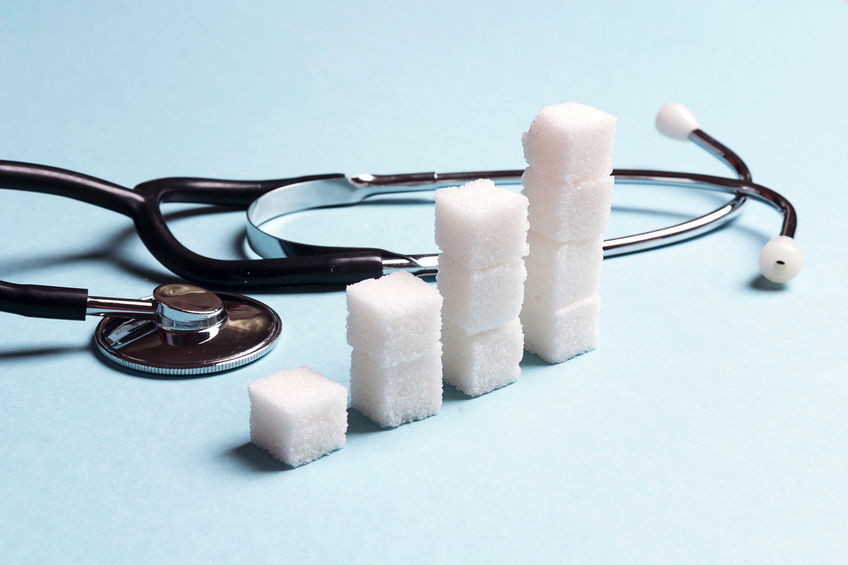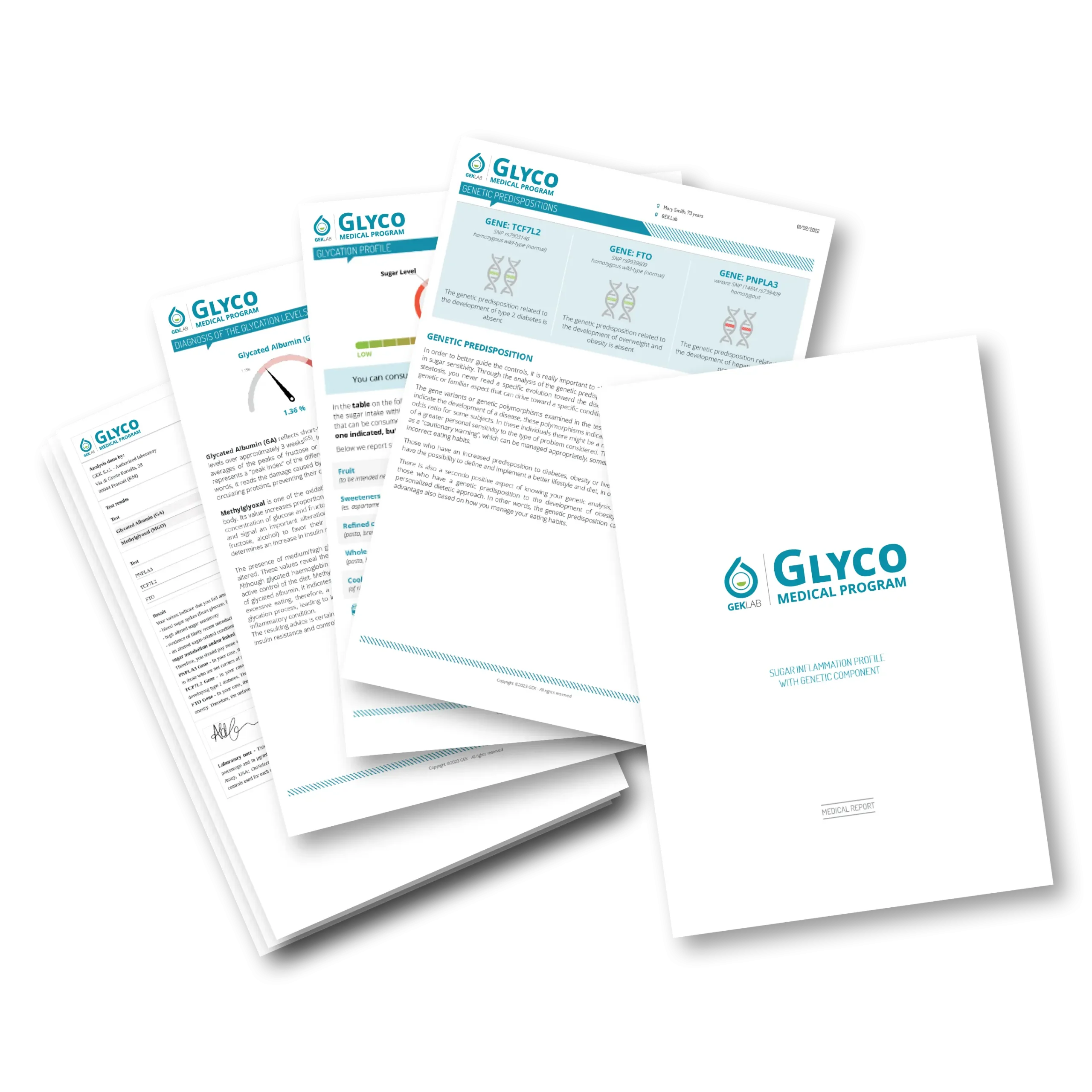
Until a few years ago, the primary indicators used to detect alterations in sugar sensitivity were glycated hemoglobin (HbA1c) and fasting blood glucose levels.
However, these indicators, although very useful for controlling and monitoring an already established diabetic condition, need to be supplemented with new and innovative markers of sugar-induced damage.
Several scientific studies published between 2018 and 2019 in some of the most important diabetology journals have highlighted the limitations of HbA1c and fasting blood glucose in the early identification of sugar-induced damage1,2,3.
A new marker to consider is methylglyoxal.
Methylglyoxal allows for the measurement of glycemic variability, which refers to the continuous fluctuations in glucose levels that can occur throughout the day.
Methylglyoxal is a marker of glycemic variability, meaning it allows for the assessment of the continuous fluctuations in glucose levels that can occur throughout the day.
Acute fluctuations in glucose levels throughout the day, on different days, and even over longer periods can lead to multiple inflammatory conditions and disorders (such as reactive hypoglycemia, malabsorption, neuroinflammation, mood disorders, cardiovascular problems, etc.).
The increase in methylglyoxal in the body is proportional to these blood sugar fluctuations (glucose, fructose, or other sugars).
An altered relationship with sugars, without appropriate modifications, can increase the risk of developing metabolic diseases and the accumulation of oxidizing substances over the long term.
Neurodegenerative diseases like Alzheimer’s, Parkinson’s, dementia, and premature aging are often induced or exacerbated by the accumulation of methylglyoxal and other free radicals. These conditions are on the rise in the general population.
In 2010, 35.6 million people were affected by neurodegenerative diseases, with estimates of this number doubling by 2030 and tripling by 2050. These alarming statistics call for early intervention and greater attention to diet.
In delicate situations, such as when a woman decides to become pregnant, measuring methylglyoxal can detect gestational diabetes before it develops. Between 4% and 10% of women develop gestational diabetes during pregnancy.
The GEK group participated in research and the publication of a study in Nutrients in 20204, which supported the use of methylglyoxal and other markers to identify sugar-induced damage early and prevent gestational diabetes.
In this study, methylglyoxal levels were significantly higher in women with gestational diabetes compared to the control group. This molecule is a free radical that, due to its danger, is also called a glycotoxin or alarmin.
What should be done when methylglyoxal concentrations are elevated in the body?
A balanced diet should aim to allow for the slow and controlled absorption of sugars, avoiding the formation of glucose or fructose spikes that negatively impact health, energy levels, concentration, sleep quality, the ability to lose weight, and facilitate the progression of metabolic, degenerative, or inflammatory diseases.
We know that sucrose, fructose, sweeteners, and alcohol are inducers of inflammation and weight gain. When consumed excessively, they send metabolic signals to the body that promote the accumulation of oxidizing substances like methylglyoxal.
Humans possess a hormone (NPY) that helped the species survive in the Paleolithic era by stimulating the search for sugars. However, today, the widespread availability of sweets, excess fruit, sweeteners, and alcohol represents a potential threat to health.
No food is inherently an enemy, and neither are sweets or sugar, but they should always be consumed with discernment and in accordance with individual characteristics.
The PerMè Medical Program, Glyco Medical Program, and Screening allow for early detection of the potentially harmful effects of sugars (such as fructose, glucose, maltose, sorbitol, galactose, and others) and alcohol, as well as measuring the response to nutritional changes.
- Schmidt M.I. et al., Lancet Diabetes Endocrinol. 7, 267-277 (2019). doi: 10.1016/S2213-8587(19)30058-0.
- Richter B., Hemmingsen B., Metzendorf M.I. & Takwoingi Y., Cochrane Database Syst. Rev. 10, CD012661 (2018). doi: 10.1002/14651858.CD012661.pub2.
- Rodriguez-Segade S. et al, Acta Diabetol. (2019). doi: 10.1007/s00592-019-01342-5.
- Piuri G. et al, Nutrients 2020, 12(2), 479; doi: 10.3390/nu12020479.





